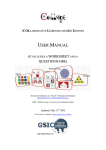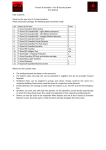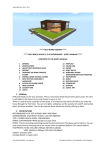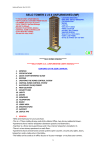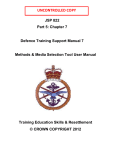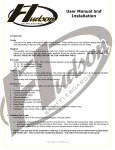Download 2.4-facilitator-guid.. - Step-It-Up-2
Transcript
Sparks & Mindset Activity Overview Time: 113 minutes (allow 2 hrs) FOR GROUPS This group activity begins by supporting sparks conversations that have been occurring between Bigs and Littles. Then the focus shifts to new content about the development of a growth mindset. All youth have a spark – a special quality, skill or interest that they are passionate about. A spark comes from inside of us, and when we express it, it gives us joy. By the age of ten, all youth understand the concept of spark; however, one-third of adolescents in the U.S., or millions of youth, do not know their spark. Of those that do know their spark, just 37% have Spark Champions –caring adults who actively assist the youth in that spark development. While adults support young people in identifying and pursuing their sparks, it’s important that adults avoid making a youth’s spark today a fixed identity. Sparks most often change over time. In this group activity, Little’s sparks are explored through interviews with peers, and a sparks collage. Why do some people reach their full potential, while others of equal talent, do not? After three decades of extensive research, Dr. Carol Dweck asserts that success is directly related to people’s beliefs about their intelligence and talent.1 Those who believe their gifts and intelligence are innate and carved in stone have a “fixed mindset”, whereas those who believe that their abilities and intelligence can be developed through effort and practice have a “growth mindset”. The effects of one’s mindset on life choices and resulting achievements are profound. Children and adults who hold the implicit belief that intelligence and talents are fixed tend to be concerned about proving their abilities, rather than learning. This belief causes them to interpret mistakes as threats to their ego rather than as opportunities to improve. Mistakes defeat their self-confidence because they attribute errors to lack of ability, which they feel powerless to change. Consequently, in order to decrease the likelihood of making mistakes, and increase the likelihood of demonstrating their skill or intelligence, these individuals tend to avoid challenges. Youth with a fixed mindset often avoid making a concerted effort in their endeavors - in the classroom, on the field, or in pursuit of personal goals, fearing that hard work indicates a lack of ability or intelligence, which prevents them from reaching their full potential. 1 Dweck, C. (2006) Mindset: The New Psychology of Success. New York: Ballantine Books Last Updated: 6/8/2011 BBBS Group Activity #2 1 Youth with a growth mindset, on the other hand, tend to demonstrate the kind of perseverance and resilience required to convert life’s setbacks into future successes. They believe intelligence and skills can be developed through education and hard work. They want to stretch themselves and learn. Challenges are motivating rather than intimidating, as they present opportunities to grow their skills and intellect, enabling them to work towards audacious goals and achieve their full potential. The second half of the activity is designed to promote a growth mindset in Littles. This mindset lesson has been carefully crafted by scientists to cultivate the youth’s belief, using a very short intervention. Some essential elements include: a) This is “new science”, and you are the lucky ones to have a peek at this new science. b) We seek your advice on how to help next year’s Littles to use a growth mindset in their lives. c) It is a foregone conclusion that of course, you—the participants— have a growth mindset. In this lesson, Bigs and Littles watch a Star Wars Video and a Michael Jordan Video clip that show the difference between fixed and growth mindsets. Littles then get an understanding of how the brain thinks its thoughts, as messages are transferred from neuron to neuron through synapses. Through a PowerPoint presentation, and a short Neurons & Synapses video clip, Bigs and Littles will learn about their brains, and they will be introduced to the growth mindset language. In order to promote a growth mindset among Littles, we must avoid trying to persuade them directly. As Professor Elliot Aronson shows, “…direct attempts at persuasion typically produce such small effects...” He goes on to point out that, “…one of the most powerful paradigms …has been referred to as counter-attitudinal advocacy, wherein people are induced to try to convince others of the rightness of a position that differs from their own privately held belief.”2 So, instead of attempting to persuade young people directly, this lesson focuses on how young people can help others learn about a growth mindset. Littles take time to produce a letter that gives advice to next year’s Littles. Goal Bigs and Littles explore sparks and begin to shift to a growth mindset. Objectives By participating in this lesson, Bigs & Littles will: 1. Explore & list sparks & sparks champions, including peers’ and personal, current and potential. 2. Believe that the brain can grow in the face of challenge through effort, strategies & seeking help. 3. Define how growth mindset applies to personality. 4. Begin growth mindset adoption through writing a growth mindset advice to other, younger youth. 2 Aronson, E. (1999). The Power of Self Persuasion. American Psychologist, 54, 875-884 Last Updated: 6/8/2011 BBBS Group Activity #2 2 Anchor Vocabulary • Spark – Passion, interest or talent that catalyze the drive for personal growth. • Spark Champion – An adult who encourages youth to advance spark and serves as a resource (if appropriate). • Neuron- a specialized, impulse-conducting cell that is the basic unit of the nervous system, consisting of the cell body and its parts, the axon and dendrites. • Axon- The long thread-like part of the nerve cell (neuron) that transmits impulses out from the cell body. • Dendrites- The branching process of a nerve cell (neuron) that conducts impulses from other cells into its cell body. • Synapse - The space where a nerve impulse is relayed from one cell to another through chemicals called neurotransmitters. The chemicals transfer nerve information across the synapse just like a boat carrying a message between two shores. The electrical impulse from one cell triggers a chemical release in the synapse (space), and the chemical flows across the space and triggers the next cell’s electrical activity. The message flow is as follows: 1 cell’s axon—to synapse——to next cell’s dendrites. • Fixed Mindset - The belief that you have a certain amount of intelligence or ability, or a certain personality that cannot be fundamentally changed. • Growth Mindset - The belief that your basic qualities, intelligence and abilities are things that you can change and grow. Materials & Media • • • • • • • • • Sound system or CD Player (and an upbeat song) Computer with MS PowerPoint installed LCD Projector 1 copy of the book Mindset: The New Psychology of Success 1 sheet of paper and scotch tape for each Little (for Sparks interview microphones) 1 notecard for each Little (for Sparks Collage) 1 large Poster paper (for Sparks Collage) Colored markers for each Little Cookies or a healthier treat for ending party Last Updated: 6/8/2011 BBBS Group Activity #2 3 Step-It-Up-2-Thrive Library: www.bbbs.stepitup2thrive.org/mindset • • • • PowerPoint: Sparks & Mindset Activity www.bbbs.stepitup2thrive/pptsparks&mindset Video: Star Wars© Clip www.bbbs.stepitup2thrive.org/starwars Video: Michael Jordan www.bbbs.stepitup2thrive.org/michaeljordan Video: Neurons & Synapses www.bbbs.stepitup2thrive.org/neurons&synapses Handouts (one for each Big and one for each Little) • School Scenarios • Mindset Matrix • Mindset Advice Letter Recommended For Bigs & Littles: • Share Praise & Growth Mindset Brief with a Parent/Guardian or friend Bigs Only: • Read Mindset Anchor Paper, Brain Toolkit and Praise & Growth Mindset Brief • Optional for Bigs: Read the book Mindset: The New Psychology of Success, By Carol Dweck Last Updated: 6/8/2011 BBBS Group Activity #2 4 Actual Time Write actual start time here: Lesson Outline ENROLL (8 min) Lesson Description Build relationships with Bigs/Littles as they walk in the door. Opening (1 min) Q-Clap: PLAY an upbeat song that Bigs & Littles might like. Get all Bigs up and clapping. Build clapping to a crescendo and cut the music. (Agencies can use another opening method that fits their organizational culture.) ___:___ Slide #1: Title Slide Welcome & Introduction • Welcome to BBBS and brief introductions Enrollment Questions (3 min) Review Agenda (2 min) Sparks Intro (2 min) ___:___ EXPERIENCE & DEMONSTRATE (10 min) Ask Framing & Enrollment Questions • Today we’re going to share and learn about Sparks and Mindset. • We are also going to learn some fascinating things about your brain. • How many of you are interested in learning about the weird and wild things going on in your brain? Slide #2: Agenda Say: • Let’s start with hearing more from you about the Sparks Conversations you’ve been having. • Who can tell us what sparks are? (elicit responses) • What are some of the sparks you’ve seen in other people? • Great, now you’ll get to hear about more sparks by becoming a reporter… Sparks Peer Interviews Slide #3: Sparks Interviews Share instructions for peer interviews. Say: • Littles, you are all reporters from a famous television news show. Last Updated: 6/8/2011 BBBS Group Activity #2 5 • • • • • • • • Your job is to make a microphone and then interview quite a few Bigs and Littles about their sparks. All of you are reporters and interviewees so take a break from your reporting regularly so you can be interviewed by someone else. Make your microphone by rolling your paper into a cone and taping it. (Demonstrate how to make a paper cone) Bigs, you will be the reporter’s assistants. Your job is to follow the Littles around and write down all the answers they get to their interview questions. Remember, 1/3 of youth don’t yet know their sparks. If you don’t know your spark right now, that’s fine, share an interest or two that you want to learn more about, or how you are going about your discovery process... Littles, here are your interview questions: (Write questions on the board) 1. Do you have a Spark? If not, what interests you? 2. How did you, or will you discover your spark? 3. What’s it feel like when doing your spark? Or, what do you see in another doing his/her Spark? 4. (add your own question) Begin your interviews! Say: • What are some of the sparks you heard? • How did people find their sparks? • How do people feel when they are pursuing their spark? • I hope that you learned something about yourself and your peer through these interviews. We’re now going to take what we learned and share it with the group, by making a Sparks Collage. ___:___ EXPERIENCE (10 min) Last Updated: 6/8/2011 Personal Sparks Reflection Slide #4: Sparks Collage Pass out notecards (1/youth) and colored markers. BBBS Group Activity #2 6 Make Sparks Collage Say: • Bigs and Littles, on these notecards, write down your current spark (or potential spark, if it’s unknown). • You can write about a spark you are interesting in exploring. • Draw something associated with the spark – an image or how it makes you feel. • You can draw and write as many as you want. • When you are done, tape card to the poster, to create a group Sparks collage. Hang Sparks collage in a visible place in the room. Give a big round of applause. ___:___ LEARN & LABEL (2 min) Brain and Mindset is introduced. Slide #5: A User’s Manual… For Your Brain! • • • • • • • • Today, we also have some exciting information for you about your brain. A team at Stanford University has developed these workshops based on research they have done to understand how young people can be successful in life. Lots of young people like you have taken these workshops and said that these were the most interesting and useful things they learned. Believe it or not, the brain has a lot to do with success and we want to teach you how to use it. Who has ever bought a new stereo, xbox, or phone? Did it come with a user’s manual? The brain is a lot more powerful than all of those electronics, and it doesn’t come with a user’s manual. So we created a workshop to provide a user’s manual for your brain! Toward the end of this workshop you’ll get this Brain Toolkit, an actual user’s manual for your brain! (raise your hand) How many of you are curious about what’s going on inside your brain? Slide #6: We Need Your Help • Excellent. As we learn about the brain today, we need your help. • We need to learn how to share these messages about success with other Littles like Last Updated: 6/8/2011 BBBS Group Activity #2 7 • • ___:___ LEARN & LABEL (5 min) Learning about the brain is posited as a help to dealing with challenges. you. It’ll mean a lot more coming from you than it will coming from adults like us. You’ll use what you learn today to help next year’s Littles. Slide #7: Challenges Say: • Did you ever wonder why sometimes you just completely forget something that you know you studied for? • Or, have any of you tried something really hard and just gave up because you couldn’t get it? • Researchers have studied thousands of youth like you around the world and find that these problems are extremely common. • • • Please take out a piece of paper, pencil or pen and answer the question on this slide. The purpose of this exercise is for you to start thinking about how what we will learn about brain research will help you face some of these setbacks or problems in school. Maybe one time you wanted to learn something well, but you didn’t know it as well as you wanted to. Slide #8: Kiesha • Here’s what some young people had to say… • Can someone read this for us? Slide #9: Alan • Who can read this one? • We can see that these are common problems. • Fortunately, scientific research shows that these problems can be overcome by learning about the brain. • We’re going to start with a little movie clip that highlights two mindsets… ___:___ EXPERIENCE (10 min) Last Updated: 6/8/2011 Star Wars Clip (5 min) Slide #10: Star Wars© Clip BBBS Group Activity #2 8 Show Video: Star Wars © Clip and process. Debrief (5 min) Say: What Happened? • What did Yoda want Luke to do? (Answer: to lift the spaceship out of the water) • Why wasn’t Luke successful? (Answer: he had an attitude that he couldn’t do it.) • What was Yoda’s attitude or belief? (Answer: You can do it if you believe you can.) Slide #11: The Growth Mindset Movie Debrief (continued): Say: Scientists would call Yoda’s attitude or belief a Growth Mindset. It is a belief that individuals can learn, change and become better at things with effort, strategies and help. So What? Obviously this movie is a fantasy, but does it remind you at all of real life? How? Who can tell me about a time in your life when you had an attitude like Yoda, and showed a growth mindset about a challenge? How did your growth mindset help you? Now What? What advice would you give to someone who just says things like: “Well, I’m just no good at math.” OR “I could never become a good athlete.” OR “I’m just an angry person, so I’m not going to change…” ___:___ LEARN & LABEL (20 min) PowerPoint on the brain and growth mindset Slide #12: The Growth Mindset (continued) • Read and explain slide. Say: • Now we’re going to learn about what’s going on in your brain. Last Updated: 6/8/2011 BBBS Group Activity #2 9 Slide #13: The Brain • Here’s a gross picture of the brain. • Today we’ll use pictures like this next one. (click to next slide) Slide #14: The Brain (2) • Here’s a diagram of a brain that’s nicer to look at. • Now, let’s drill down deeper and take a peek. Slide #15: A Dense Network of Neurons • The brain, when you drill down deeper, is actually a dense network of neurons that are connected. • Now let’s go even further to look at just one brain cell. Slide #16: Parts of Neuron • In the diagram below, we’re just focusing on one cell. There are several parts that are important. • First, you should be able to see the dendrites. Those parts reach out to get signals from other nerve cells. • When you reach out your hands to someone else, you were sending out a signal, just like that the brain has its own arms reaching out. These are called the dendrites. • Next, you can see the cell body. That’s like the brain of the cell. It gets the message from other brain cells. • Next, there’s an axon. It’s a long cable that carries the message and sends it out to another cell. • Now that you can see that the neuron cell has different parts, you may be wondering how it does anything – how it thinks thoughts. • Let’s go back to the picture of the network of neurons. Slide #17: Neuron & Synapses Video • Now we are going to watch a video about how thinking takes place. • You will hear an additional vocabulary word called Synapse. • A Synapse is the scientific name for the space between neurons. As an electrical signal reaches the ends of the axon, it changes to a chemical signal that flows across this synaptic space to the next cell. • You will hear how your brain cells connect with electrical and then chemical Last Updated: 6/8/2011 BBBS Group Activity #2 10 signals, and then electrical and then chemical signals from one cell to another. Slide #18: How the Brain Learns • The brain thinks thoughts by sending messages. • The neurons in your brain are connected in a dense network, like a web. These cells communicate with each other. • Each neuron is connected to between one and one million other cells. Overall in your brain, there are over a trillion connections. • When you have a thought, it sends a signal from one set of neurons to another. • Also, messages can travel as fast as 1000 feet per second, or 680 miles an hour, the speed of a fast jet plane. Then the brain turns the signals into thoughts or actions. • In fact, your brain is the most complex 3-pound mass in the known universe! Slide #19: The “Brain Muscle” • Read and explain slide. • Let’s look at some scientific experiments that show that the brain is like a muscle. Slide #20: Remarkable Rats • Scientists at UC Berkeley took twin rats and put half of them in an empty cage with just food and water. • The other half of the rats were put in a rich environment, with puzzles, toys and exercise equipment. • After some time, they took out the rats and weighed their brains. • The rats that were in the cages with all the toys actually grew 10% heavier brains. • Why do you think this happened? • This is great for rats, but what about humans? Do their brains also grow? Slide #21: Guerilla Fighters Study • There was a group of Spanish-speaking guerrilla warriors who had been completely isolated since they were young. They had never seen books, learned to read or write, or been to school. • After the war, and to help them readjust into society, a group of leading brain researchers worked with them and taught them how to read. • A couple of years after the classes, they measured their brains. Just like the rats, Last Updated: 6/8/2011 BBBS Group Activity #2 11 their brains grew in the “reading areas”, compared to the group that was not taught how to read. Slide #22: Cabbies Study • Do any of you know where London, is on the globe? If you want to figure out where you’re going it’s one of the hardest cities in the world to find your way. • The streets are a tangled mess and there are almost no grids. • Scientists carried out this famous study with London cab drivers. • They measured the Hippocampus - the area of the brain that remembers information about places - in London cabdrivers and compared them to other people. • The cabbies’ brains were bigger, and the longer they were on the job, the bigger this area of the brain became! • This shows that learning and practicing this skill made that area of their brain grow. Slide #23: Phineas Gage • I’m going to tell you a story. At the end I’d like you tell me if you think it’s a true story or a made up story. • A man named Phineas Gage was a very successful railroad worker over 160 years ago, in 1848. He had a “well-balanced mind” - he worked quickly, was patient, planned ahead, and was very good at business. • All of this changed one day when an accidental gunpowder explosion sent a large iron spike through the front of his face! • It went through the frontal lobe of his brain. Fortunately, e did not die from the accident and his injury healed pretty quickly; however, he was left without most of the frontal lobe in his brain. • Since the frontal lobe controls things like planning ahead or keeping your emotions under control, then without the frontal lobe, he had very little selfcontrol. • Instead of being able to be a good businessman and being able to bite his tongue when he was angry, he would insult people, would say things that were mean, and he did not have any patience. • Later in life he stretched his brain, formed new connections, and created new pathways – even though his frontal lobe never grew back! • It took a long time, but he grew his self-control pathways. He no longer had angry Last Updated: 6/8/2011 BBBS Group Activity #2 12 • outbursts, he was no longer mean to people, and was more patient. Do you think the story was true or false? (Answer: It’s true.) Slide #24: Your Brain Needs • Your brain uses 1/3 of all your energy. • With all that energy being used, your brain needs certain things to function well. • Fuel: Your brain needs healthy foods with Omega-3’s such as Eggs, Nuts and Fish • Sleep: Your brain needs to recharge for at least 1/3 of the time (8-9 hours of sleep). If not you forget things more easily. • Exercise: Movement and exercise increase breathing and heart rate so that more blood flows to the brain. A recent study found that walking actually improves memory. • Challenge: If you don’t use brain cells, you’ll lose them. Research shows that the more you challenge your brain, the more connections you grow between cells. Slide #25: Forming New Connections by Working on Challenges • The next time you are faced with a challenge and you are struggling to learn something, remember: • Challenge is a good thing! • Everyone reach out their arms and stretch them: • This is what your dendrites are doing when faced with a challenge. • Imagine your dendrites as they stretch and grow in number, making stronger, thicker connections that can take in more information. Slide #26: Forming New Connections (continued) • Even when you don’t feel like you’re getting it, your brain is growing more connections… • I heard a story about a student at _____ University. • She was taking really hard math classes, and was very anxious about whether she could do it. One strategy she used to overcome her anxiety was to imagine that she was going to the brain gym each time she did her math homework. • If there were no weights on the machines, how could she get stronger? • Things need to be challenging (or heavy, like weights) for brain to get a good workout. Last Updated: 6/8/2011 BBBS Group Activity #2 13 Slide #27: The Growth Mindset • This belief is called the growth mindset. • Read definition. • Sometimes a young person comes back to us and says, “Hey, I listened to what you said and tried REALLY hard and still didn’t succeed.” • We let them know that just putting out a lot of effort doesn’t do it. • You can flap your arms all you want, but you’re not going to fly. • The trick is to put in the effort, the right strategies, and get help from others. Key Message: The trick is to put in a lot of effort, the right strategies, and get help from others. Slide #28: Fixed and Growth Mindset • Unfortunately, some people outside of this room have a fixed mindset. • What kind of fixed mindset things have you heard other people say? • They believe that you are born an “artistic person” or a “math person” or a “natural athlete” and that you can’t really change those labels. • Luckily, we have proof that your brain and abilities can grow and change. People’s mindsets can also change from fixed to growth. Slide #29: Mindset: Many Aspects • Mindset can affect many parts of your life. • Like the rats and guerilla fighters, you can grow your brain to become better at math, writing, or any kind of academics. • Like Michael Jordan, who got cut from his high school basketball team and once shot free throws for three hours after missing a crucial shot, you too can grow your physical ability. • Even your personality can change and develop! • Just as Phineas Gage changed his ways, you too, can grow aspects of your personality. Fixed Mindset Statements ___:___ DEMONSTRATE Last Updated: 6/8/2011 BBBS Group Activity #2 14 (5 min) Youth practice selfpersuasion in pairs. Say: • Now we’re going to give you chance to convince your peers. Slide #30: How would you answer these “Fixed Mindset” statements? • Please get into pairs. • I’m sure you’re partner doesn’t believe this, but imagine that they do. • Try and convince your partner by teaching them what you’ve learned. • Partners, act this out for real. If you are really being convinced give us a thumbs up. • Then, we’ll switch and have the other partner do the convincing. Allow 2 minutes to pass for each partner. Say: • Ok, whose partner did a good job of convincing them? • Excellent. Please come on up front and try to convince me. (youth comes up) Reward all with a round of applause. Slide #31: What you say matters… • Life is a set of challenges. • As you face the challenges, pay attention to what you say, because that reinforces what you think and what you do. • If you say “I can’t”, you reinforce the brain to shut down in it’s thinking about creative strategies to succeed. • Watch your own language, if it’s growth mindset language, it can help you move forward. If you hear fixed mindset language, think about how it could be changed it to be growth! ___:___ EXPERIENCE & DEMONSTRATE (15 min) Bigs and Littles apply the “growth mindset” to personality and challenges faced in school. Intro (3 min) Last Updated: 6/8/2011 Slide #32: School Scenarios – Mindset Matrix Say: • • • • I’m going to pass out a list of scenarios faced by other youth in school. You’re going to work in Big-Little pairs and choose 2 scenarios that interest you. You’ll then complete the Mindset Matrix. First, identify the issue at hand. BBBS Group Activity #2 15 • • Pair Activity (7 min) Next, think of a fixed mindset and two growth mindset responses. Finally, write down what the outcomes might be based on the response you develop. Pass out the School Scenarios and Mindset Matrix handouts. Give the pairs 7 minutes to complete it. Facilitate a group discussion. Process (10 min) Say: What Happened? • What scenario did you pick? • What was the issue at hand? • Name the fixed mindset and two growth mindset responses you had. So What? • What was the outcome of each? • How do you think this would help or hurt you in your own life? Action Triggers for Challenges in school (5 min) Now What? • What advice do you have for your siblings/friends? Action Trigger Say: • Has anyone ever hear of the concept of Action Triggers? • It’s a way to set up what you might do in the future and make it easy to do the right thing. • For example, I know I’m going to want eat a ton of chocolate after lunch. • To help prevent this, I might set up an Action Trigger to make sure I walk far away from the chocolate store after lunchtime. My action trigger is something that I deliberately plan to do ahead of time, to control that tempting moment. To resist the chocolate, I set up a plan to meet my friend after lunch on the other side of the school grounds. Last Updated: 6/8/2011 BBBS Group Activity #2 16 • • • Scientists have shown that when you plan ahead for a way to resist temptation and get to your goal, you are 75% more likely to get to there. What questions do you have about Action Triggers? Now, Littles and Bigs, take two minutes to write out an Action Triggers for one of the scenarios. Say: • Ok, who has some good Action Triggers for us? (Group share out.) • ___:___ DEMONSTRATE & REVIEW (20 min) Youth write letters to convince other youth that people can change with effort and good strategies. Slide #33: Mindset Advice Letters! Instructions (2 min) • They will believe it much more if it comes from you and not from us boring adults ;) • In your same pairs, you are going to write a real letter that we will share with next year’s Littles. Bigs, you write down what the Littles say. What advice would you give other Littles about the growth mindset? Use this Advice Letter Worksheet to write a few paragraphs giving advice to next year’s Littles. It’s helpful to use your Brain Toolkit and handouts to help you come up with a convincing message. You’ll have about fifteen minutes to write your letter. Try to be creative and convincing. When you are done writing, we’ll ask a few of you to share. One piece of advice I have for you is this: Let’s say, for example, that you want to use the Phineas Gage story. In your letter, you shouldn’t say, “You should really believe this because of Phineas Gage…” It’s more convincing to tell the specifics of that story so that next year’s Littles know what you are talking about. Say: • Now we’re going to participate in a very important part of the day: You are going to write an advice to younger Littles. • • • • • • • • Last Updated: 6/8/2011 BBBS Group Activity #2 17 Writing (15 min) • • What questions do you have? THANK YOU SO MUCH FOR HELPING OTHER LITTLES. HANDOUT: Brain Toolkit and Mindset Advice Letter Reading/clearing up of misconceptions Allow Littles fifteen minutes to write. Bigs assist. Facilitator moves from group to (3 min) group, giving support and helpful hints. Ask several Littles to read their letters. Praise excellent examples and persuasive points. Be specific. Clear up any misconceptions in the letters. Give each reader a round of applause. ___:___ CELEBRATE (8 min) Bigs & Littles celebrate their learning. Cookie Party! Hand out cookies (or another healthier treat) and congratulate Littles & Bigs on a job well done. Handout Praise & Growth Mindset Brief Training is evaluated. Say: • Bigs and Littles, we a few interesting items for you • It’s called the Praise & Growth Mindset Brief and it’s a great little piece on how to give praise to support a growth mindset. • Bigs and Littles, read through it and share it with a parent, guardian or friend. • Bigs, go ahead and watch the Video: Conversations to Goal Selection again. • Also, optionally, you might enjoy reading this book: (Mindset: The New Psychology of Success) • Any questions? • Thank you for your participation! Handout Training Evaluations Say: Please take the next five minutes to give us feedback on this training. Last Updated: 6/8/2011 BBBS Group Activity #2 18 Handout Praise & Growth Mindset Brief to Bigs and Littles. Slide #34: Recommended! For Bigs: Mindset Anchor Paper, Praise & Growth Mindset Brief For Bigs & Littles: Brain Toolkit Play upbeat music…. Last Updated: 6/8/2011 BBBS Group Activity #2 19




















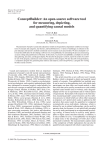


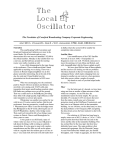
![reply_card [Converted] - TheMysticHelming.mono.net](http://vs1.manualzilla.com/store/data/005649301_1-3a046a309a634867449ff92cdd957a65-150x150.png)
